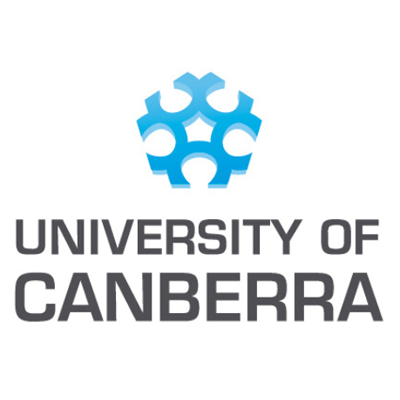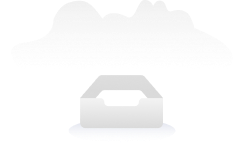Master of Secondary Teaching
University of Canberra








Priority 2 (Medium)
Places nearly full (not over-allocated)|Visa Approval Time: 4-8 weeks queuing for processing
Data updated: 2025-11-13
2026
- Total Tuition Fee65,130 AUD
- Fee Per Academic Year32,565 AUD
- Course Duration2.0 Year (104 weeks)
- Last Updated07-11-2025
Overview
Introduction
Discover the ultimate lifelong learning careerAre you a passionate graduate whose keen to positively shape Australia’s young minds? UC’s two-year Master of Secondary Teaching will provide you with the knowledge and skills to pursue your passion and enter a career as a teacher of students in Years 7–12.With the delivery of the Australian Curriculum in mind, discover pedagogical problem-based learning approaches within classroom and school settings and numerous ways to reflect upon your own professional learning objectives.Informed by the latest research, this postgraduate course for pre-service teachers includes 60 days of professional experience within Canberra region secondary schools.Like all Teacher Quality Institute (TQI) accredited education programs, UC’s Master of Secondary Teaching requires students to successfully complete a Professional Experience component and pass the moderated Teaching Performance Assessment (TPA) that takes place within a school.Study the Master of Secondary Teaching at UC and you will: master the skills required for lesson planning and effective teaching and learningcritically reflect on the ways in which educational theory and research informs teaching practicedevelop effective ways to collaborate as part of a team and interpret evidence and dataincrease your ability to reason and make evidence-based decisionsempower learners with your strong subject and pedagogical knowledgeestablish and maintain ethical and respectful relationships with students, colleagues and parentspromote participation and inclusion and develop the strengths and needs of students from diverse cultural, linguistic, religious and socio-economic backgroundsstrengthen your professional leadershipengage with schools in the Canberra region and build your own network of experienced professional and mentors.Work Integrated Learning (WIL)WIL is a vital component of this course and each year you will participate in 60 days of placements in partner secondary schools in and around the Canberra area.Each of these placements will give you the opportunity to gain hands-on experience and use your new knowledge in real life teaching environments – with the full support and encouragement of education mentors.This course places emphasis on ensuring that you, as a student teacher, understands and appreciates your students; and your personal development concerning educational learning, professional workplace engagement, and improving personal and professional outcomes.This placement approach ensures that each UC student graduates with a unique and wide-ranging network of education-related mentors and contacts.Note: Students must obtain a Working with Vulnerable People Check before their first placement.Career opportunitiesA UC Master of Secondary Teaching degree is an accredited qualification and offers graduates the chance to acquire the skills needed to pursue a career in teaching and a pathway to a range of other lifelong learning careers.Graduates can work in such roles as:secondary school teacherprincipalrelief teacheradult educatorchildren’s authorcurriculum adviserflexible learning developerprofessional trainer, coach or tutorlife coach or development executiveinternational school teacherlecturereducation entrepreneurforeign aid worker/educatoracademia, including pedagogy researcherpolicy design and implementation.Professional accreditationThis course is registered by the ACT Teacher Quality Institute (TQI) and recognised as a teaching qualification throughout Australia.
Key Dates
2025
2026
2027
School Application Steps
Follow the process below, prepare materials in order, and track the progress of each stage.
- 1
Prepare Materials (School Application)
- Organize academic and language materials based on the list of target courses and schools.
- If the requirements are not yet met, you can apply for a language pathway program/packaged course (ELICOS/internal test) first.
- Name the electronic versions of documents uniformly (in English) for easy reuse in subsequent visa applications.
Documents for Adult Applicants
- 2
Briefing on School-Arranged Interview (if applicable)
- Submit application materials, including transcripts, passport, and English proficiency proof, to the State Department of Education.
- School review: The Department of Education recommends schools based on the student's situation, and the school arranges an interview after its review.
- Interview notification: An email will specify the interview time, method (usually Zoom or Teams), and preparation details.
- Interview content: A conversation in English including self-introduction, interests, academic situation, future plans, and a comprehensive assessment of learning habits, adaptability, reasons for coming to Australia, etc. The duration is approximately 15-30 minutes.
- 3
Submit School Application
- Submit the application through the school's official website or an agent's portal and pay the application fee (if any).
- Submit supplementary documents as required and track the admission progress (Conditional/Unconditional Offer).
- After meeting the conditions, pay the tuition deposit and complete the acceptance procedure (Accept Offer).
- 4
Obtain CoE and Arrange OSHC
- The school issues the CoE (Confirmation of Enrolment).
- Purchase/confirm OSHC to cover the entire visa period (including dependents, if any).
- 5
Visa Document Preparation (Subclass 500)
- Organize documents for finances, GTE, English proficiency, and medical examination, ensuring consistency with the chosen course.
- Check the letterheads, dates, translation formats, and certification requirements of visa documents.
Language Requirements
IELTS Score
PTE Score
2026 year(s)
Listening
7.5
Speaking
7.5
Reading
7.5
Writing
7.5
Overall
7.5
School Level
The school's visa assessment level determines the risk level for students applying for a visa and is a significant reference.
For example, if a school's visa assessment level is 2, the applicant will face more restrictions and be required to provide more written evidence, such as proof of language proficiency and financial capacity.

Course Campuses
- ACT
Similar Course
NSW
QLD
ACT
VIC
SA
WA
NT
TAS

No data available~

